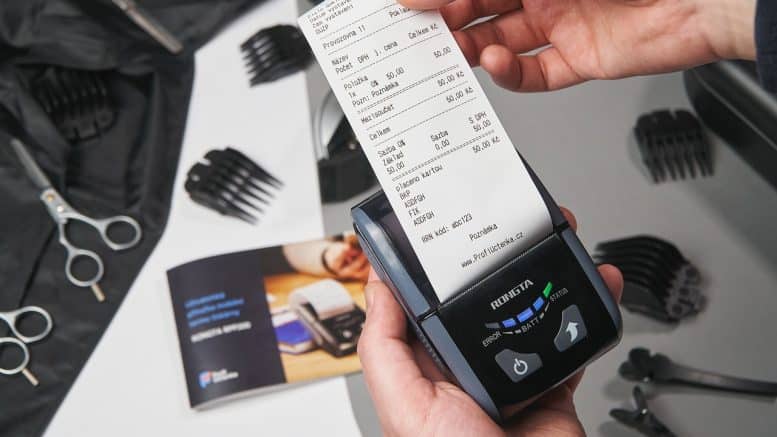The new VAT penalty regime introduced by HMRC poses challenges, however, there are solutions to help organisations simplify and decrease risk on businesses’ tax returns, argues Russell Gammon, below, Chief Solutions Officer at Tax Systems
 Just six months ago, the UK government unveiled guidance relating to critical compliance checks which VAT-registered companies must be aware of to escape penalties for Making Tax Digital (MTD) for VAT. The new points-based VAT penalty system arrives in the New Year, marking the end of a light touch introductory period for MTD. MTD for VAT is now the required process and HMRC is introducing a new approach to enforcement, which aims to encourage businesses to successfully submit their VAT calculations first time round.
Just six months ago, the UK government unveiled guidance relating to critical compliance checks which VAT-registered companies must be aware of to escape penalties for Making Tax Digital (MTD) for VAT. The new points-based VAT penalty system arrives in the New Year, marking the end of a light touch introductory period for MTD. MTD for VAT is now the required process and HMRC is introducing a new approach to enforcement, which aims to encourage businesses to successfully submit their VAT calculations first time round.
These changes to the penalty system might be nuanced but they are also potentially substantial. In tandem with fines for defaulting on compulsory requirements, such as missing submission and payment deadlines, HMRC will also monitor the behaviours underlying any VAT compliance failure. Thus, companies will have to evaluate the ramifications of these non-negotiable compliance obligations in relation to their existing VAT reporting systems and processes.
Minimising the tax gap
HMRC has published statistics which outline how MTD has assisted in reducing the VAT tax gap from 8.5% to 7% – a development that will have created significant extra tax income. These figures indicate that the most important behaviours feeding the tax gap include failing to take reasonable care (19%), with criminal attacks, evasion and legal interpretation in complex transactions each accounting for between 15% to 17%.
The incoming VAT penalty system is designed to increase the reliability and accuracy of VAT returns by introducing default behavioural penalties. These will incentivise organisations to pay proper attention when calculating and submitting their VAT liabilities. The ultimate aim is to reduce reporting errors and re-submissions, and therefore the tax gap, while also streamlining HMRC’s own tax administration burden.
Penalties and obligations
From January 1st 2023, companies must file returns using digitally compatible software, which can store records while securely exchanging data with HMRC. A potential £400 fine awaits those who fail to comply. HMRC also asks businesses to keep detailed digital records on all VAT-related transactions or face a £15 daily fine. At the same time, organisations are expected to use digital links to transfer data between software platforms and applications, rather than copying and pasting information. Failure to do so will incur a £15 daily penalty, which might appear a minor deterrent but, if HMRC identify multiple compliance failures, it could amount to a significant sum. Crucially, this applies per entity, so for groups with multiple entities, these fines can add up quickly. After all, if one entity fails a particular test in a group, it is likely all entities in the group would also fall foul of the requirements.
Perhaps most importantly, HMRC insists that companies must use software-enabled checking functions to ensure their returns are accurate before filing. Incorrect or error-ridden returns risk fines of up to 100% of the due VAT. Other considerations to bear in mind include ‘lack of care’, leading to 30% due VAT fines; ‘deliberate errors’, subject to an additional 70%; and ‘deliberate and concealed errors’, punishable by an extra 100% VAT.
The implications of the new regime
Large corporations face heightened risk of these fines, which are applicable across all VAT registrations, because a compliance error in one area will most likely be duplicated across any part of the business that uses the same processes. The Box 6 split, for example, which enables multiple VAT rate claims, is notoriously difficult to precisely record and report.
Put simply, any failure to comply with the new VAT regulations will place a company firmly in the sights of HMRC and lead to further examination. Given a suggestion that there is an anomaly worth investigating, HMRC will assess whether the compliance failure is due to lack of care and attention or an example of a deliberate error or act of concealment. Combined with the mandated use of software-enabled checks, there is no doubt that HMRC will expect full evidence these have been introduced effectively. Failing to use the checking functionality in widely available off-the-shelf tax-specific software will alert HMRC to potentially suspicious motives behind any failure to comply.
Act now or pay later
Companies must not be complacent – now is the time to take the necessary steps to ensure you are reducing non-compliance risks. There are many reliable tax software platforms that provide rigorous checking features to make sure your returns are 100% correct pre-filing. If HMRC asks for additional data, those solutions will be able to extract reports showing checks have been completed.
The important thing is to get your tax returns right, first time and with minimal fuss. Look for specialist VAT software that enables automated digital checks on all the key elements outlined by HMRC as the most error prone. That includes VAT on leased car expenditure, intra-group transactions, passenger transport and business entertaining. Also valuable is customisable software that will allow you to build checking processes based on your own unique datasets, processes and operations. Now that compliance and reconciliation are at the top of the agenda, robust digital checks are the best way to insure yourself against the incoming regulations and avoid hefty fines.

